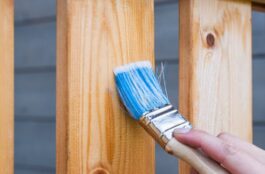
Everyone regards home as the safest shelter and refuge to keep the household safe from all dangers. While this is true, this doesn’t guarantee your house is untouchable and insusceptible to the damages of particular catastrophes like strong winds, storms, fires, and floods. Thankfully, we will discuss some helpful advice in this post to help you get ready for the worst.
Five Tips to Prevent Wind Damage in Your Home
While climate conditions are uncontrollable, there are workable things you can do to be secure from the dangers they may bring. Here are five safety measures you can follow to prevent or lessen wind damage in your home.
1. Check your home’s vulnerable areas
Whether you are preparing your home for a storm or just expecting the unforeseen, the first thing you have to do is secure your home from wind damage. Take a look around your house and check the spots you assume are prone to wind damage. The vulnerable points in your home that require maintenance and replacement, if needed, are the doors, gutters, roofs, and windows.
Also, take note of anything the wind might pick up or throw things on your windows. This includes grills, patio furniture, table, chairs, and other items. As much as possible, bring these potential missiles inside your house or at least secure them with strong cables or chains.
2. Reinforce doors and windows
For much better protection against wind damage, you may set up aluminum or steel storm shutters for sliding glass doors, windows, and French doors to prevent projectiles or flying objects from shattering them. Hurricane shutters offer tough and exceptional long-term security, especially to those living along the coast, so it’s a very good idea to have them installed on your doors and windows.
3. Trim your trees regularly
Your cherished landscaping might also be a reason for significant risk for wind damage. In the event of strong winds, even robust and healthy trees can topple onto your home. It’s wise to get rid of any trees close to your home to prevent possible damages or at least remove overhanging weak limbs and branches to minimize their dangers.
Tall trees and the fully grown ones that are too near your home can affect your house’s foundations or roofings when uprooted. Leaking roofs can result in water damage to your ceilings and wall paint or plaster. While a rooted-out tree can cause this, other aspects can lead to water damage. If you discover any signs of water damage in your home, it is necessary to employ water damage restoration professionals instantly to prevent more damage from occurring.
4. Keep your gutters clean and maintained
Guarantee your downspouts and gutters work properly and flow away from your structure. Strong winds can eventually weaken the metal of your gutter, like bending a paperclip back and forth to break it. Metal fatigue can loosen the screws and nails securing the gutters in place, so it is essential to investigate this area every once in a while to prevent your gutters from shattering and breaking.
Damaged gutters due to winds can inflict leakages, which would cause a water-damaged roof and wood rot. Additionally, it can cause cracks and damage to your foundation because of the pooling water. When dealing with water damage in your home, it’s ideal to have remediation experts come over to ensure the issue gets solved securely and properly. You may check websites like puroclean.com to learn more about various restoration services offered by professionals.
5. Secure your shingles
When preparing your home for the storm or unanticipated wind damage, it is necessary to check your roof’s shingles. Loose shingles might not only end up being dangerous projectiles throughout heavy winds, but they can also make your roof prone to hail and rain damage. By tightening, enhancing, and securing any loose shingles, you can protect your home and family from windy weather.


